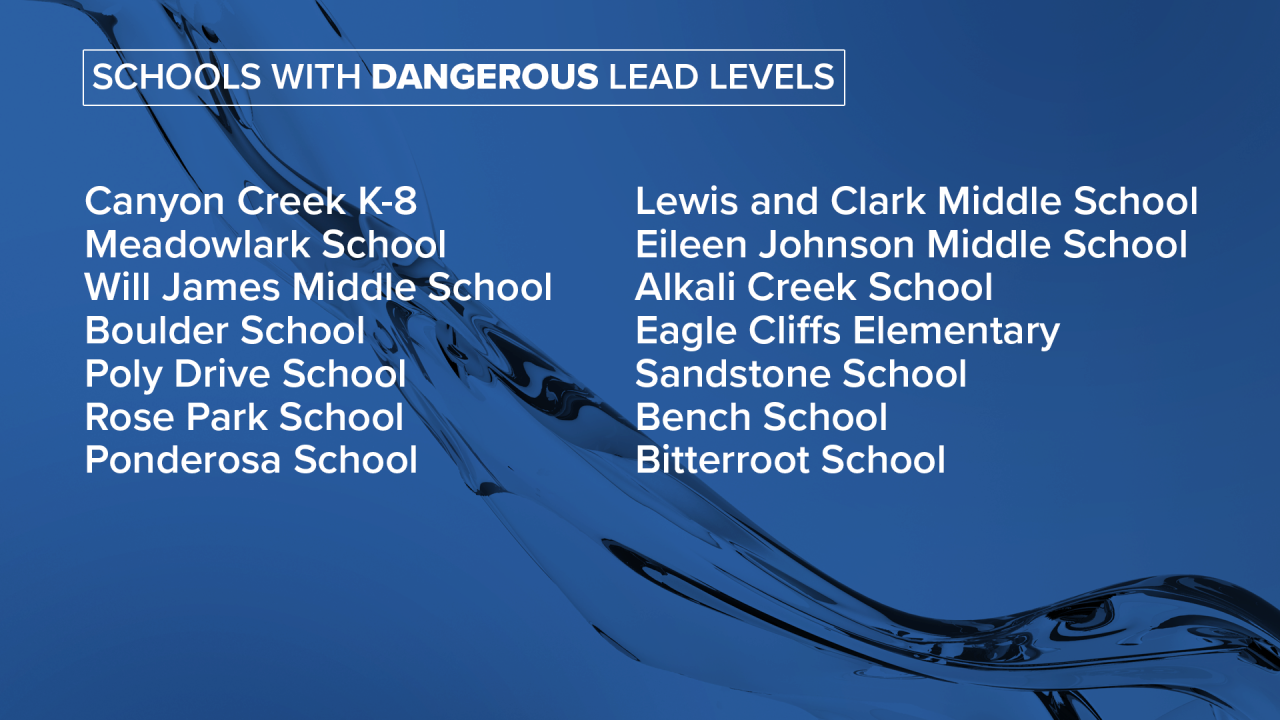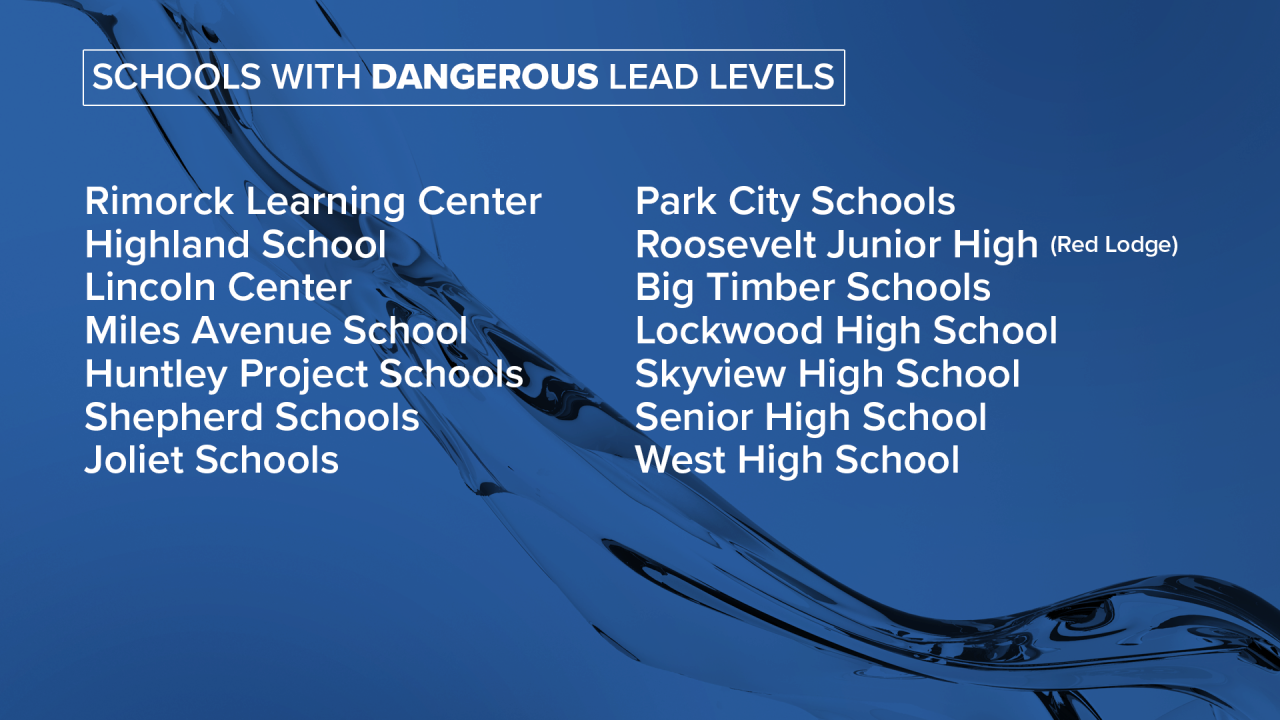BILLINGS — Dangerous levels of lead have been detected in schools across Montana, including almost two dozen schools in Billings. MTN spoke with Scott Reiter, executive director of facility services for Billings Public Schools, on what’s being done to alleviate the problem.

“We had always tested the water in the schools, but we did it differently. We tested one fixture at every school and did it every couple of years and kind of monitored where it was,” Reiter said.

A new rule implemented by the Montana Department of Public Health and Human Services changed the process of testing for lead in school fixtures.
Billings Public Schools had been adhering to the federal limits of .015 parts per billion.
“The new rule lowered that limit down to .005 and they wanted every fixture in every school tested so it’s a huge undertaking,” Reiter said.
Facility Services tested lead levels last summer when school was out. Because students and staff weren’t present, water lines stayed stagnant. This could cause higher lead-level results.
“What I found out is that the water in the lines had sat all summer for the most part, so it kind of gave false readings,” Reiter said.
Billings is just one of the many school districts in the state trying to address the problem. Priority number one is retesting fixtures when water lines aren’t stagnant. That will begin Friday, March 11.
“The second is we’ll continue changing the ones we can without shutting the schools down and then this summer we’ll go through and turn the water off to the schools and change all those that we weren’t able to,” Reiter said.
Facility Services has already changed some fixtures that tested high for lead.
As for the theater control room sink at Skyview High School that tested at 7,800 ppb, it hasn’t been used in years. Only the day custodians can access the sink and the fixtures have already been removed.
“I’m still not sure why it’s quite that high but I’m sure it’s just from the stagnant water sitting in it for years and years,” Reiter said.
Work still needs to be done, but Reiter is hopeful the bulk of the fixtures will be changed in the summer.
“This is the first year of doing this so we’re learning a lot as we go, too. But we’re all after the same goal for clean drinking water, too,” Reiter said.
You can access an interactive map of Montana schools that tested high for lead levels by clicking the graph in this article.
You can also look up a school's lead results by clicking this link.




